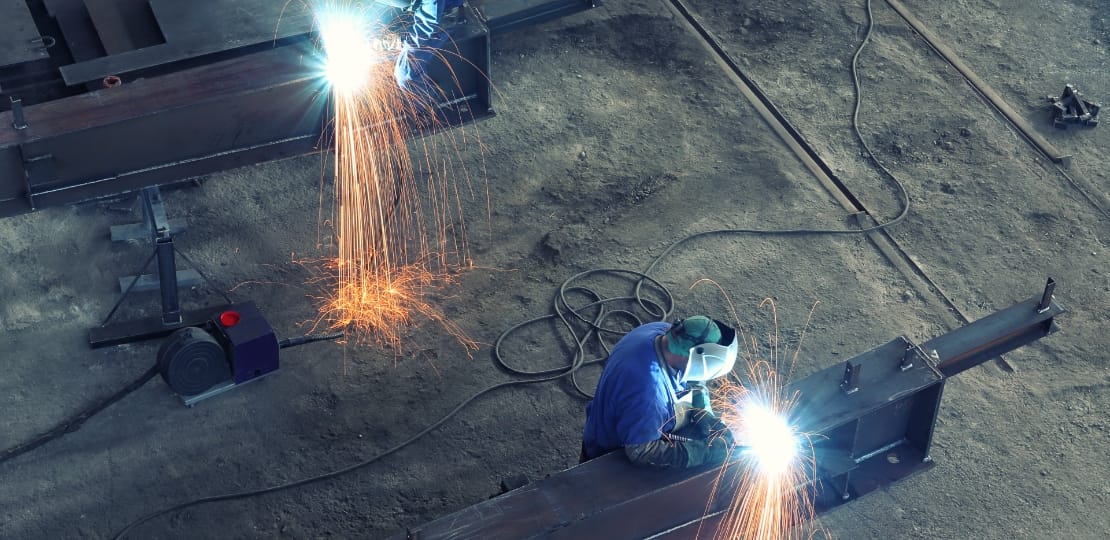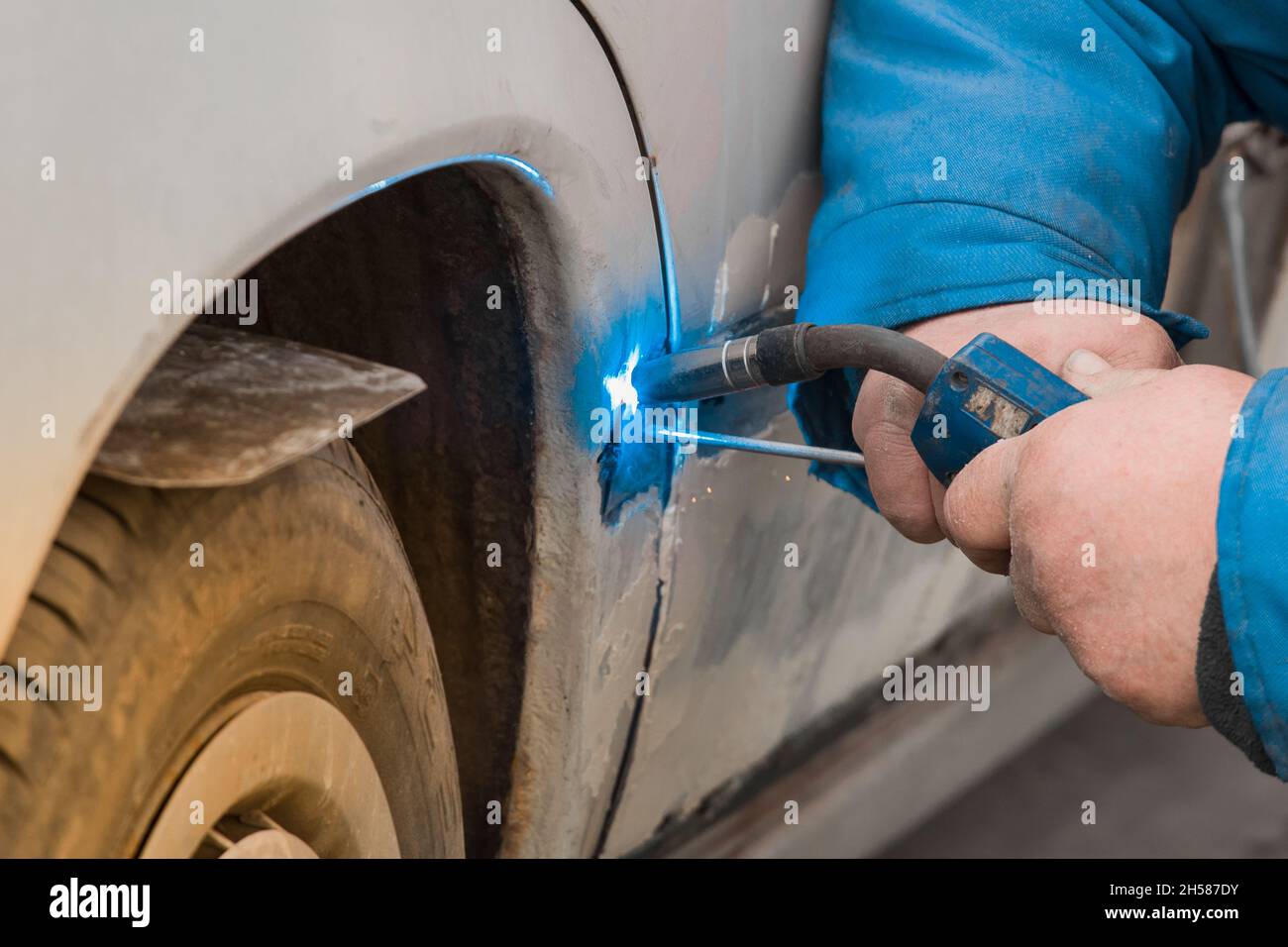Essential steps to eliminate porosity in welds with Belgrade Welding
Usual Welding Repair Service Issues and How to Address Them Properly
Welding fixings often encounter a series of concerns that can endanger the stability of the end product. Usual troubles consist of inadequate penetration, porosity, and imbalance, to name a few. Each flaw offers unique challenges that need specific methods for resolution. Understanding these issues is important for welders intending to enhance their skills and outcomes. This conversation will explore these usual welding repair service issues and reliable approaches to address them.
Insufficient Infiltration
Insufficient penetration takes place when the weld steel stops working to totally fuse with the base product, resulting in weak joints and possible structural failings. This concern commonly stems from insufficient warm input, wrong electrode angle, or inappropriate welding rate. Welders might encounter insufficient penetration as a result of a mistake of the essential parameters for a details product density or type. In addition, contamination on the base product's surface area can hinder reliable bonding, worsening the problem. To resolve poor penetration, welders need to ensure appropriate settings on their equipment and keep a clean job surface. Normal inspection of welds is advised to recognize any type of shortages early, enabling for timely corrections and the prevention of compromised architectural honesty in welded settings up.
Porosity
Porosity is a typical flaw in welded joints that manifests as small gas bubbles entraped within the weld steel. This defect can compromise the integrity of the weld, resulting in minimized stamina and possible failure under stress and anxiety. Montana Mobile Welding and Repair Belgrade Fabrication. Porosity commonly emerges from contamination, moisture, or incorrect welding techniques, which allow gases to get away right into the liquified weld pool. To attend to porosity, welders ought to assure appropriate surface area preparation, maintain a tidy functioning environment, and make use of suitable welding criteria. Additionally, choosing the appropriate filler material and protecting gas can alleviate gas entrapment. Normal examination and testing of welds can assist recognize porosity early, ensuring timely restorative actions are taken, therefore maintaining the quality and integrity of the bonded structure
Misalignment
Misalignment in welding can occur from numerous factors, including inappropriate arrangement and thermal development. Recognizing the source is necessary for effective resolution. Numerous correction techniques are readily available to realign parts and guarantee structural stability.
Root causes of Misalignment
Welding misalignment often originates from a selection of underlying issues that can jeopardize structural honesty. One main cause is improper fit-up of components prior to welding, which can result in spaces and unequal surfaces. Variations in thermal development throughout the welding procedure can additionally cause distortion, especially if the products being joined have different coefficients of development. Furthermore, inadequate clamping and fixturing might fail to hold components securely in position, causing movement during welding. Badly conserved devices, consisting of welding equipments and devices, might introduce disparities in the weld grain, additional contributing to imbalance. Operator error, stemming from not enough training or experience, can additionally play a substantial role in developing misaligned welds.

Adjustment Techniques Readily Available
Resolving misalignment efficiently needs a mix of restorative strategies tailored to the certain problems available. One typical technique is using fixtures or jigs to hold parts in the proper placement during welding, making sure consistent placement. Furthermore, preheating the materials can help decrease distortion and enhance fit-up. For considerable imbalance, mechanical adjustment methods, such as utilizing hydraulic jacks or clamps, can be utilized to remedy the setting prior to welding. Post-weld warm therapy might also be essential to ease stresses brought on by imbalance. Ultimately, careful evaluation and change during the setup stage can stop misalignment concerns from becoming significant issues, promoting a smoother welding process and enhancing general structural stability.
Distortion
Distortion is an usual difficulty in welding that can arise from numerous variables, consisting of unequal heating & cooling. Understanding the reasons of distortion is necessary for implementing reliable prevention techniques. Resolving this issue not just improves architectural stability yet also improves the overall top quality of the weld.
Reasons for Distortion
When subjected to the intense heat of welding, products usually undertake modifications that can bring about distortion. This phenomenon mostly develops from thermal growth and tightening throughout the welding process. As the weld location warms up, the material increases; upon air conditioning, it acquires, which can create interior anxieties. Additionally, irregular heating throughout a workpiece can aggravate these tensions, resulting in bending or flexing. The kind of product also plays a substantial role; metals with differing thermal conductivity and coefficients of development might respond differently, resulting in unforeseeable distortions. Bad joint layout and insufficient fixturing can add to imbalance throughout welding, raising the possibility of distortion. Understanding these causes is essential for effective welding repair service and prevention methods.
Prevention Techniques
Reliable avoidance techniques for distortion throughout welding emphasis on managing warm input and ensuring proper joint layout. Maintaining a regular heat input assists to decrease thermal growth and contraction, which can bring about distortion. Using methods such as preheating the work surface can additionally minimize the temperature level slope, promoting consistent heating. In addition, selecting appropriate joint layouts, such as T-joints or lap joints, can boost security and lower stress and anxiety focus. Applying appropriate fixturing to protect the workpieces in area even more aids in keeping alignment during the welding procedure. Ultimately, staggered welding series can distribute warm more evenly, avoiding local distortion. By applying these methods, welders can significantly decrease the possibility of distortion and improve the total high quality of their welds.
Fracturing
Splitting is an usual issue come across in welding fixings, usually arising from numerous variables such as inappropriate cooling rates, product choice, or inadequate joint preparation. The incident of fractures can considerably compromise the honesty of the weld, resulting in potential failures throughout operation. To resolve this issue, welders have to initially assess the origin triggers, making sure that products work and appropriately picked for the particular application. In addition, controlling the cooling rate during the welding process is important; fast cooling can cause tension and result in fracturing. Correct joint design and preparation also add to decreasing the danger. Implementing these strategies can improve weld high quality and sturdiness, eventually decreasing the chance of cracking in completed weldments.

Insufficient Combination
A considerable problem in welding fixings is incomplete fusion, which happens when the weld metal does not effectively bond with the base material or previous weld passes - Belgrade Fabrication. This defect can cause weaknesses in the joint, possibly compromising the integrity of the bonded framework. Factors adding to insufficient fusion include not enough heat input, inappropriate welding technique, and contamination of the surface areas being signed up with. To address this issue efficiently, welders need to ensure appropriate pre-weld cleansing and surface area preparation, as well as readjust their welding criteria to attain ample infiltration and combination. Routine evaluation throughout the welding process can likewise assist determine incomplete fusion early, permitting for prompt restorative procedures to improve the overall quality of the weld
Overheating
While welding fixings can improve structural honesty, overheating presents a considerable difficulty that can lead to material destruction. Too much warm throughout welding can change the mechanical residential properties of metals, leading to reduced stamina, raised brittleness, get more info and bending. This phenomenon is particularly crucial in high-stress applications where architectural integrity is paramount. Identifying getting too hot can entail visual evaluations for staining or distortion, along with keeping an eye on temperature level throughout the welding procedure. To mitigate the threats connected with overheating, welders should employ suitable techniques, such as regulating warmth input, changing traveling speed, and making use of suitable filler materials. Furthermore, executing pre- and post-weld warm therapies can help bring back product residential properties and improve the total quality of the fixing, making certain lasting performance and security.
Regularly Asked Inquiries
What Are the Usual Indicators of a Welding Problem?

Exactly How Can I Examine My Welds for High quality?
To test welds for high quality, one can utilize aesthetic evaluations, ultrasonic testing, and radiographic approaches. Each method assures architectural stability, recognizes issues, and verifies adherence to specified criteria, eventually improving the reliability of the welded joints.
What Security Precautions Should I Take While Welding?
When welding, one ought to prioritize security by using proper personal safety equipment, making certain proper air flow, safeguarding combustible materials away, preserving a tidy work space, and knowing environments to avoid injuries and accidents.
Can I Repair a Weld Without Redesigning the Entire Joint?
Repairing a weld without redesigning the entire joint is feasible, depending upon the damage (Montana Mobile Welding and Repair Belgrade). Methods such as grinding, adding filler product, or making use of a welding process can successfully address specific imperfections while preserving the surrounding structure
What Equipment Are Necessary for Reliable Welding Repair Works?
Vital devices for effective welding repair services include a welding machine, wire brush, mill, protective gear, clamps, and filler materials. Each device plays a crucial function in making sure high quality and security during the repair process. Porosity normally develops from contamination, moisture, or inappropriate welding methods, which permit gases to get away right into the liquified weld swimming pool. Inadequately kept devices, consisting of welding machines and tools, might introduce variances in the weld bead, further adding to misalignment. When subjected to the intense heat of welding, products often undergo changes that can lead to distortion. Breaking is an usual problem experienced in welding fixings, often resulting from numerous factors such as inappropriate air conditioning prices, material choice, or inadequate joint prep work. A significant concern in welding repair services is incomplete combination, which occurs when the weld steel does not properly bond with the base material or previous weld passes.